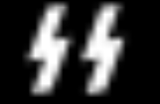
Johannes Göhler
Encyclopedia
Johannes Göhler was a Sturmbannführer
(Major) in the Waffen SS during World War II
. He was awarded the Knight's Cross of the Iron Cross
, which was awarded to recognize extreme battlefield bravery or successful military leadership by Nazi Germany
during World War II.
Johannes Göhler was born on 15 September 1918 in Bichofswerda
Sachsen.
He volunteered to join the SS-VT and took part in the Anschluss
of Austria
and the occupation of the Sudetenland
in 1938.
During World War II, he was awarded the Iron Cross
2nd class in October 1941, during Operation Barbarossa
the invasion of the Soviet Union
. The Iron Cross 1st class followed in January 1942.
He was given command of the 4th Squadron, 1st SS Cavalry Regiment, 8th SS Cavalry Division Florian Geyer and was in command when he was awarded the German Cross
in Gold and the Knight's Cross in September 1943, when serving on the Eastern Front
.
Johannes Göhler survived the war and died on 21 February 2003.
Sturmbannführer
Sturmbannführer was a paramilitary rank of the Nazi Party equivalent to major, used both in the Sturmabteilung and the Schutzstaffel...
(Major) in the Waffen SS during World War II
World War II
World War II, or the Second World War , was a global conflict lasting from 1939 to 1945, involving most of the world's nations—including all of the great powers—eventually forming two opposing military alliances: the Allies and the Axis...
. He was awarded the Knight's Cross of the Iron Cross
Knight's Cross of the Iron Cross
The Knight's Cross of the Iron Cross was a grade of the 1939 version of the 1813 created Iron Cross . The Knight's Cross of the Iron Cross was the highest award of Germany to recognize extreme battlefield bravery or successful military leadership during World War II...
, which was awarded to recognize extreme battlefield bravery or successful military leadership by Nazi Germany
Nazi Germany
Nazi Germany , also known as the Third Reich , but officially called German Reich from 1933 to 1943 and Greater German Reich from 26 June 1943 onward, is the name commonly used to refer to the state of Germany from 1933 to 1945, when it was a totalitarian dictatorship ruled by...
during World War II.
Johannes Göhler was born on 15 September 1918 in Bichofswerda
Bautzen (district)
Bautzen is a district in the Free State of Saxony in Germany including the former districts of Bischofswerda and Kamenz. It is bounded by the Czech Republic, the district of Sächsische Schweiz-Osterzgebirge, the district-free city Dresden and the districts of Meißen and Görlitz...
Sachsen.
He volunteered to join the SS-VT and took part in the Anschluss
Anschluss
The Anschluss , also known as the ', was the occupation and annexation of Austria into Nazi Germany in 1938....
of Austria
Austria
Austria , officially the Republic of Austria , is a landlocked country of roughly 8.4 million people in Central Europe. It is bordered by the Czech Republic and Germany to the north, Slovakia and Hungary to the east, Slovenia and Italy to the south, and Switzerland and Liechtenstein to the...
and the occupation of the Sudetenland
Sudetenland
Sudetenland is the German name used in English in the first half of the 20th century for the northern, southwest and western regions of Czechoslovakia inhabited mostly by ethnic Germans, specifically the border areas of Bohemia, Moravia, and those parts of Silesia being within Czechoslovakia.The...
in 1938.
During World War II, he was awarded the Iron Cross
Iron Cross
The Iron Cross is a cross symbol typically in black with a white or silver outline that originated after 1219 when the Kingdom of Jerusalem granted the Teutonic Order the right to combine the Teutonic Black Cross placed above a silver Cross of Jerusalem....
2nd class in October 1941, during Operation Barbarossa
Operation Barbarossa
Operation Barbarossa was the code name for Germany's invasion of the Soviet Union during World War II that began on 22 June 1941. Over 4.5 million troops of the Axis powers invaded the USSR along a front., the largest invasion in the history of warfare...
the invasion of the Soviet Union
Soviet Union
The Soviet Union , officially the Union of Soviet Socialist Republics , was a constitutionally socialist state that existed in Eurasia between 1922 and 1991....
. The Iron Cross 1st class followed in January 1942.
He was given command of the 4th Squadron, 1st SS Cavalry Regiment, 8th SS Cavalry Division Florian Geyer and was in command when he was awarded the German Cross
German Cross
The German Cross was instituted by Adolf Hitler on 17 November 1941 as an award ranking higher than the Iron Cross First Class but below the Knight's Cross of the Iron Cross respectively ranking higher than the War Merit Cross First Class with Swords but below the Knight's Cross of the War Merit...
in Gold and the Knight's Cross in September 1943, when serving on the Eastern Front
Eastern Front (World War II)
The Eastern Front of World War II was a theatre of World War II between the European Axis powers and co-belligerent Finland against the Soviet Union, Poland, and some other Allies which encompassed Northern, Southern and Eastern Europe from 22 June 1941 to 9 May 1945...
.
Johannes Göhler survived the war and died on 21 February 2003.

